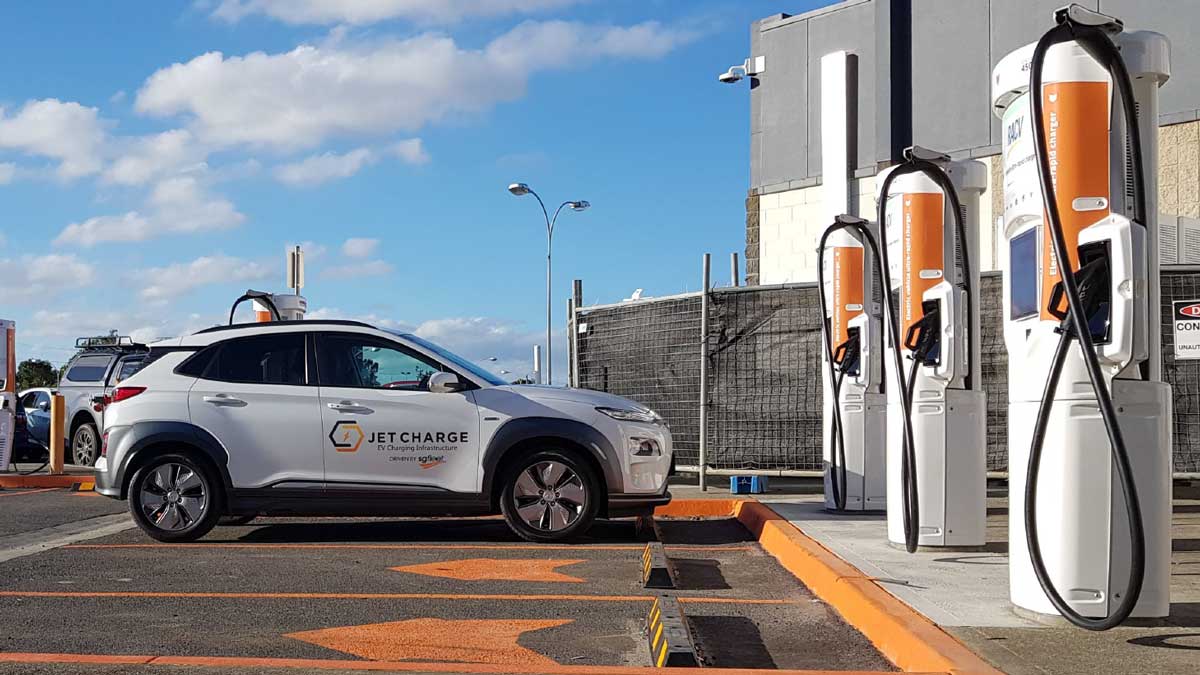

Source: Jetcharge
The head of the biggest installer of electric vehicle charging equipment in Australia predicts that EVs will ultimately displace residential battery storage, and become a key asset for the market operator to manage the grid.
Tim Washington, the founder and CEO of Jet Charge, which has installed thousands of charging stations in homes and businesses, and is also involved in the roll out of fast-charging stations, says vehicle-to-home (V2H) and vehicle-to-grid (V2G) technologies will likely make home batteries redundant in the long run.
Currently, Australia has seen only one EV that has V2G technology – the new Nissan Leaf – but while the car has just arrived in the country, the V2G part has not yet been rolled out as it is still undergoing testing with Australian networks and the Australian Energy Market Operator.
Still, Washington says the proposed offering from Nissan is significant. Nissan is the first maker of EVs to say that V2G technology will not void the warranty of its car battery, and within 5 years the major plug suppliers will provide V2G technology as standard.
“Bi-directional charging though EVs will spell the end of residential storage as we know it … it will completely displace it,” Washington told the Electric Vehicle Transition conference co-hosted by The Driven and RenewEconomy late last month. (See more stories here).
“By 2024, every (electric) vehicle coming out to the market will be (V2H and V2G) capable. It’s just a question of whether you use it.”
Washington says he has counted up all the various state schemes that encourage and/or subside the installation of home batteries, and expects that to total in the region of 150,000 units by 2024. At around 10kWh per unit (a generous estimate), that equates to around 1.5 gigawatt hours of storage.
Forecasts for EVs, on the other hand, predict around 100,000 vehicles a year being bought by 2024 (possibly more), and with an average battery size of at least 40kWh, that will bring in some 4GWh of storage each year.
And while it may be thought that household batteries might be easier to access, only around one quarter of these are likely to form part of any virtual power plant.
Cars, on the other hand, are not driven 95 per cent of the time, so offer that much time when they could become a grid asset, or soak up excess solar from the house during the day and power it at night, or provide a service if parked at work, or in a supermarket.
“Electricity is just another form of fuel,” Washington said. “Electricity is tied to property, and this is where we see the dynamics shifting of the type of fuel we used and who gets to control that.”
The current view of refuelling is for petrol stations, with limited areas, to get as many cars trough their bowsers as they can. With supermarkets, and other parking areas, however, it is a question of how many cars can be charged, or discharged, at the same time.
And because the major energy utilities are slow to innovate, and have low trust ratings from consumers, this offers a potential for others to innovate and occupy that space – Tesla is an obvious example, but VW has set up its own utility called Elli, and Shell is also looking to move into electricity, and EV charging.
“The answer has to be on how you change the value stack.Home batteries will be mostly used for home storage, but transport and energy can come together and electric cars can be very efficient assets that you can drive on weekend. That shows me who is going to dominate storage and demand response in the grid.”
And, of course, the car will be able to perform the function of the home battery. “Ultimately, the car will become part of the home … (and) it makes sense to me that grid operators will want to take advantage of this. The cars have a battery four to six times bigger than a home battery, and most of the time they are plugged in and no moving.
“Cars will be an energy asset first, a mobility asset second.” Washington said. “That’s why electric cars will change how we view cars. And energy.”
The electrification of Australian homes and vehicles is no longer trade-off between climate action and…
As the regulator approves more energy price rises, consumers were blithely advised to "shop around."…
Plans to develop an offshore wind farm 40km off the WA coast have gained fresh…
One of Australia's oldest wind farms turns 20 today, with some of the original staff…
Dutton has adopted a gas reservation policy and sweetened it with deregulation of gas extraction…
NSW-based company unveils its proprietary microemulsion flow battery technology for the first time, promising a…